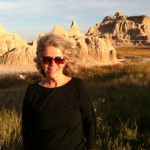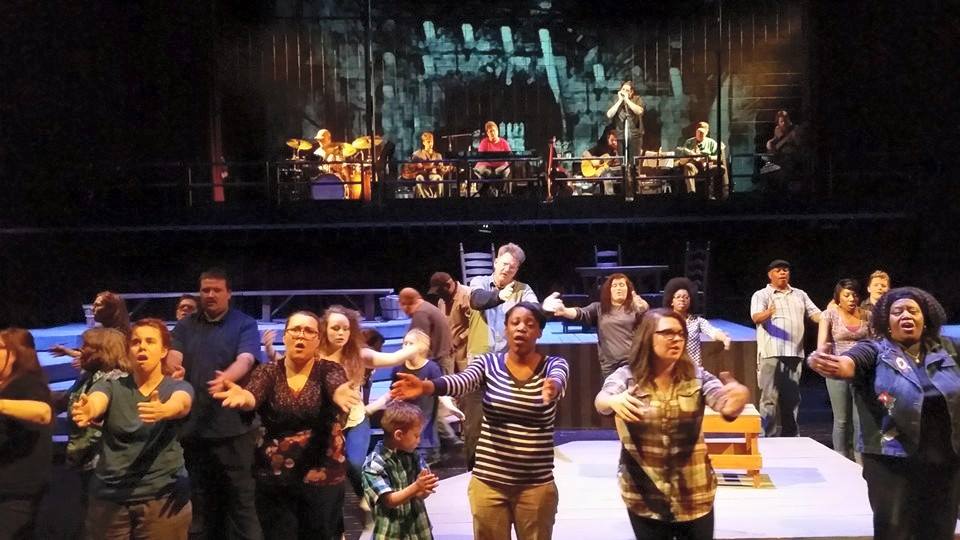Rural Arts & Culture: Powerful Forces for Positive Change
Judi Jennings, ACSJN Leadership Team, & Bob Reeder, Rural LISC
Rural arts and culture transcend challenges and enrich communities across our country every day. At the 2015 National Rural Assembly, arts and culture stood out as interactive, inter-generational, and inclusive pathways to positive change. The assembly is a biannual gathering of people and organizations devoted to building a stronger, more vibrant rural America for children, families, and communities. The focus is primarily on policy change, and there is a growing recognition of the power of rural arts and culture to inspire new thinking about policies. At the 2015 Assembly, nearly one-third of the participants identified as arts and culture advocates.
We both participated in a series of three sessions spanning the most recent gathering: a pre-convening of rural arts leaders; a lively panel session voicing varied perspectives; and a post-Assembly policy session to increase support for arts and culture. In our interlude together here, we reflect on the new ideas and important questions raised throughout the assembly and look forward to a bright future for rural arts and culture.
How do arts & culture promote greater inclusion and engagement in rural areas?
Bob: Rural arts and culture demonstrate how rural people are more alike than different by connecting us across spatial differences and joining our energies, which in many cases are about cultural survival. This is a moment of generational change and continuity, and we must act together now.
Judi: Shavaun Evans presented a great example during the panel discussion during the assembly. Cultural organizers in Kentucky are highlighting the history and accomplishments of African American poets, writers, singers, and visual artists in our state to honor their achievements and inspire a more equitable future for all.
How are rural and urban arts and culture alike and/or different?
Bob: It is important to highlight rural/urban distinctions, not to be separate but to honor that one size of community development does not fit all. Rural/urban collaborations are essential, and partners must see the value of each other. We need each other, so we must respect each other and see shared values and mutual benefit.
Judi: Sparks flew about this question at the panel discussion, which I facilitated at the assembly. My take is that there are many similarities and convergences between rural and urban. AND rural arts and culture deserve to be considered on their own merits as foundational to who we are as rural people.
What is your biggest take away for the future from the National Rural Assembly?
Judi: Bearing witness to the creativity, resilience, and fusion of innovation and tradition that makes rural arts and culture such powerful forces for positive change.. Thunder Valley Community Development Corporation is doing transformational work, deeply rooted in Native culture, on the Pine Ridge reservation in South Dakota, for example. Another powerful example is the Higher Ground theater series at Southeast Kentucky Community and Technical College. Local folks come together across age, race, and sexual identity to create and perform original plays about overcoming tough conditions in their community.
Bob: Creative placemaking has always existed as an essential element in rural culture, but we did not, and many still do not, name and separate our place from our everyday existence. As our friends from Thunder Valley point out, we are ambassadors from our local places. As ambassadors, it is important for us to refine our messages of inclusivity and community connectedness that we claim. We must not think of ourselves as a community of practitioners but always remember we are community members, striving to pursue our lives with dignity and grace. This is a moment of national focus on creative placemaking that we must take advantage of and contribute to as equal partners.
We know there are hard challenges ahead for rural communities. How can we create sustainable local economies and protect our environment? How can we create cultural zones of contact and mutual appreciation between newcomers and long time residents? How can we support new political leaders who look forward rather than backward? How can we grow new hope in places where structural poverty and social despair cause plagues of addiction?
These questions are sobering and real, but we believe rural people can create bright futures for their families and communities. Rural areas have strong cultural assets, and there are encouraging signs of change. We both serve on the newly created Advisory Board for Next Generation: The Future of Arts and Culture Placemaking in Rural America being led by Rural Policy Research Institute and Art of the Rural. Visit their newly launched Digital Learning Commons and see for yourselves the great things happening in rural arts and culture now.



Of course rural and urban communities are different, but since each community is unique, making generalizations about these differences is hard. Having lived and worked in both kinds of communities (as well as suburbs), I would say the following:
(A) Rural communities may be smaller, but arguably even the largest cities are aggregations of smaller communities, culturally speaking
(B) Urban communities may be more complex demographically and technologically, but many rural communities are catching up or surpassing urban communities in these regards
Speaking very generally, I think the greatest differences often are:
(1) Targets for change (government agencies, businesses, etc.) in rural communities may need to be regional, rather than local
(2) Some groups of people and institutions in rural communities have been around longer
(3) Cultural values in rural communities may prize open spaces, freedom from government, the land, etc. more highly
Am I on to something, full of it or both?